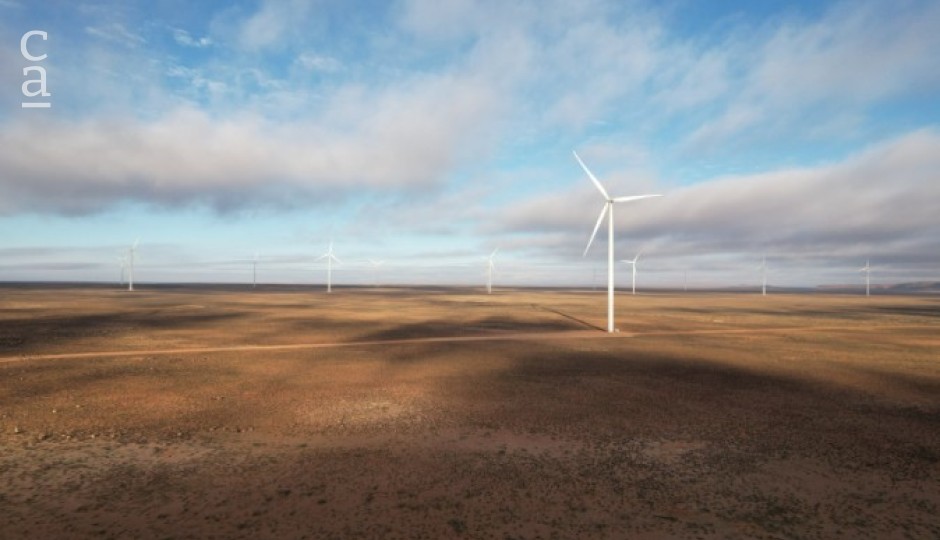Harnessing wind power for sustainable grid expansion
Wind energy can enhance the stability and reliability of transmission grids.

South Africa’s energy challenges with daily power cuts and regular load shedding have put the country at a critical juncture, with the need for solutions that can provide reliable and sustainable power. The recent discussions surrounding parastatal Eskom’s debt relief, budgetary measures, and transmission expansion plans have sparked significant attention and debate across the nation.
Amidst these discussions, the potential of renewable energy is increasingly being recognised as a game-changing solution to address these challenges and pave the way for a more sustainable energy future. The fortuitous presence of June’s high winds in the coastal regions is impossible to overlook as they have played a significant role in mitigating the occurrence of loadshedding incidents, resulting in a notable decrease in peak demand in non-renewable energy, averaging less than 29GW instead of an anticipated demand of 30GW. The unexpected availability of wind energy has demonstrated the value of renewable energy sources in the energy mix.
As South Africa navigates its energy challenges, wind power remains at the forefront of the energy transition, propelling the shift from an economy mostly reliant on coal power towards a future powered by low-carbon renewable energy.
While the Council for Scientific and Industrial Research (CSIR) reported that currently, wind power and solar PV account for 7.3% of the country energy mix, 52% of renewable power comes from wind. The Global Wind Energy Council (GWEC) predicts that 17GW of wind capacity will be added to Africa by 2027, of which 5.3GW will be in South Africa.
In 2021, South Africa recorded 668MW of new wind installations, up from 515MW in 2020, which increased the country’s overall base to 3.4GW. Siemens Gamesa has installed 855MW in the country to date.
South Africa has embraced the integral role of wind power in the country’s ability to provide affordable, sustainable power. With advancements in technology and the decreasing costs of turbines, wind power has become increasingly cost-effective and competitive with traditional energy sources. One of the key advantages of wind energy is its ability to diversify the country’s energy mix. By incorporating wind power alongside traditional energy sources, South Africa can reduce its reliance on fossil fuels and create a more balanced and sustainable energy portfolio.
Moreover, wind energy is a clean energy source that produces zero greenhouse gas emissions during operation. South Africa has set an ambitious target to reach net zero emissions by 2050 and for 22.5% of the energy mix to come from wind energy. The country has also progressed in the revision of its greenhouse gas emission levels up to 510 MtCO2e by 2025 and 420 MtCO2e by 2030.
To achieve these goals, it needs to significantly increase its renewable energy capacity, including wind power. The current Integrated Resource Plan (IRP 2019) envisions adding 14,400MW of wind power by 2030. While this will be a positive challenge, the revised IRP should follow this ambition and should even go beyond. In addition to the Renewable Energy Independent Power Producer Procurement Programme (REIPPPP), the government has enabled more and more private power purchase agreements (PPAs), which is positive for accelerating the green and just energy transition.
South Africa’s transmission infrastructure plays a vital role in ensuring the efficient and reliable delivery of electricity across the country. As renewable energy sources are increasingly integrated into the grid, the expansion of the transmission infrastructure becomes essential to accommodate the growing energy capacity.
The Northern, Western, and Eastern Cape are operating at maximum wind power capacity. While these coastal regions are typically known for their strong and consistent winds, several inland areas, such as the Free State, Mpumalanga, and Limpopo, also offer favorable conditions for wind power generation. Expanding wind power in these areas would diversify the geographical distribution of renewable energy generation and contribute to the country’s sustainability goals. Approximately 21GW of wind and 7.5GW of wind and battery storage projects are in the pipeline.
Another key benefit of modern wind turbine lies in their grid integration capabilities, which enable them to monitor grid conditions in real time and adjust their power output accordingly.
Wind energy can play a vital role in enhancing the stability and reliability of the transmission grid. Today, turbines offer an increased output per unit. This technological advancement results in a reduced need for many turbines to generate electricity while reducing the levelised cost of electricity. Also, cutting-edge technologies and predictive maintenance strategies such as Artificial Intelligence (AI), advanced sensors, and real-time data monitoring can identify potential issues and optimise turbine performance.
Wind projects not only address energy challenges but also stimulate local job creation and sustainable economic growth. In the Global Wind Report 2022, the Global Wind Energy Council (GWEC) estimates that approximately 180,000 direct and indirect full-time jobs will be created from wind energy in South Africa between 2022 and 2026 in the initial phases of projects.
In South Africa, Siemens Gamesa is committed to making a positive impact in the communities where its wind farms operate. Through various initiatives and programmes, we focus on improving the lives of community members by supporting education, promoting sustainable development, and creating job opportunities.
While the recent winds have enabled power generation and provided temporary relief, it is crucial to recognise that a long-term and sustainable solution requires a comprehensive approach to meet the country’s energy needs, promote economic growth, and ensure access to power for all.
South Africa must continue engaging in constructive discussions, considering diverse perspectives, and exploring innovative solutions.
The green energy transition can only be achieved with a reliable and efficient transmission infrastructure. By joining forces, integrating wind power into the transmission system, and supporting the expansion of the grid, the public and private sectors would contribute to a sustainable transition to a cleaner energy future.
Photo: Kangnas wind farm (Source: Siemens)

Janeck Winand is managing director South Africa at Siemens Gamesa.

